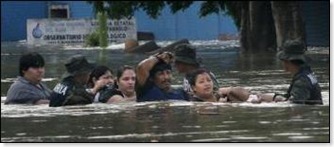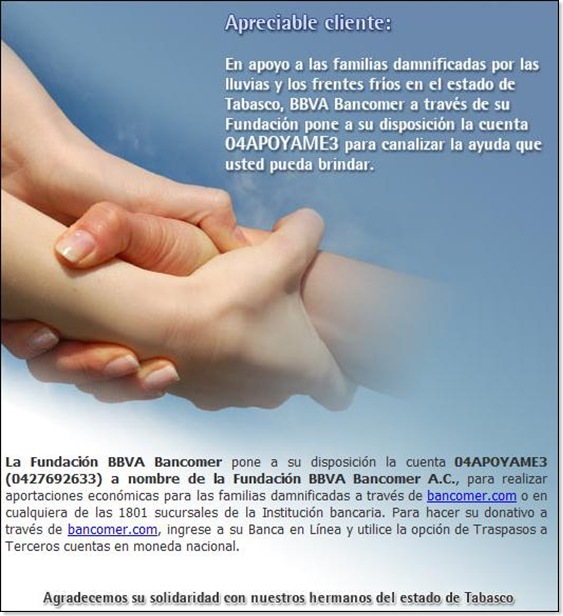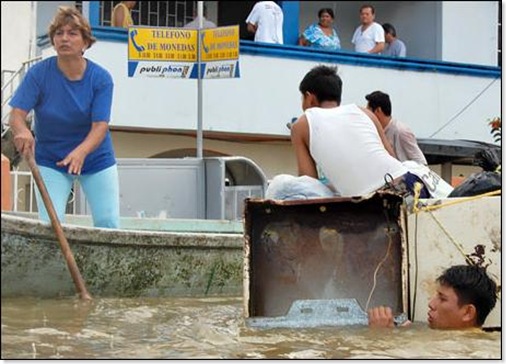November 12, 2007
Article on Loreto appears on "Canoe Travel" web site
The Canadian web site "Canoe Travel" (http://travel.canoe.ca) just published an article on Loreto:
For those who can't decide between camping beneath the stars in the desert or lounging in the sun on the beach, in Loreto, Mexico, no choice is necessary.
Loreto, the oldest town in Baja California Sur, is the land where the mountains meet the sea.
Driving into Loreto along the dusty Trans-Peninsular highway it is obvious the town, located about 700 km from San Diego, is one of breath-taking contrasts.
To the right is rugged desert terrain spotted with cacti and indigenous plants rolling into the foothills of The Sierra de la Giganta mountain range. To the immediate left, the indigo waters of the Sea of Cortez lap up onto sandy white beaches that stretch for miles.
The sea has long been the main attraction to Loreto and was once called "the world's aquarium" by famed explorer Jacques Cousteau.
More than a decade later, it still rings true.
Cool stuff - I copy the full article below.
Mexico's hidden charms
By SARAH KENNEDY -- Sun Media, November 2007, Link
For those who can't decide between camping beneath the stars in the desert or lounging in the sun on the beach, in Loreto, Mexico, no choice is necessary.
Loreto, the oldest town in Baja California Sur, is the land where the mountains meet the sea.
Driving into Loreto along the dusty Trans-Peninsular highway it is obvious the town, located about 700 km from San Diego, is one of breath-taking contrasts.
To the right is rugged desert terrain spotted with cacti and indigenous plants rolling into the foothills of The Sierra de la Giganta mountain range. To the immediate left, the indigo waters of the Sea of Cortez lap up onto sandy white beaches that stretch for miles.
The sea has long been the main attraction to Loreto and was once called "the world's aquarium" by famed explorer Jacques Cousteau.
More than a decade later, it still rings true.
Protected by five islands, the waters off Loreto form the largest marine park in Mexico which is a nursery for blue whales and thousands of different fish species.
Most fishing companies in the town offer tours upon request for diving or snorkelling off the islands.
Depending on the company, some tours are even offered aboard comfortable cabin cruisers that include a Mexican lunch and frothy tropical drinks -- even at 9 a.m.
Gliding along the pristine waters, it's not uncommon to see a school of dolphins swim alongside the boat.
The Sea of Cortez has long been a popular destination for scuba divers, but you don't have to go down very far to come face to face with massive sea turtles, sword fish and sea lions -- which is why some tourists opt for snorkeling instead.
If you're more of a land lover, the area tour operators have a number of reasonably-priced options that will keep you entertained -- and dry.
C&C tours, owned by a young geologist named Cecilia Haugen, will take guests on winding desert hikes or to Mulege (MOO-LA-HAY) an oasis in the desert with a natural spring water pool, citrus trees and ancient cave paintings.
The company also offers trips to the serene mountain-top village of San Javier, home to a majestic mission founded by the Jesuits in 1699.
After touring the mission, a delicious lunch of goat or chicken soft tacos and homemade salsa and guacamole is offered outside by a local farm family.
Buying a jar of olives from the family who pick the fruit from the trees in the village and preserve them in a homemade brine, is highly recommended.
Despite the many gifts Loreto has to offer, it has remained unscathed by the hordes of tourists migrating to Mexican destinations such as Cancun and Los Cabos.
And because of that, it's managed to maintain an authenticity that is missing from the popular tourist traps.
The cobblestoned roads in the town are lined with shops offering hand-painted souvenirs, silver jewelry and traditional Mexican mosaic art.
The town offers more than a dozen restaurants, including El Canipole, a quaint outdoor cafe owned and run by a local family who speak no English.
But that's not a problem because the restaurant, which was the romantic venue on a final date during one season of the hit reality show The Bachelor, only offers a couple of options.
As you eat under the stars, you'll be visited by a pair of Mexican guitarists who will serenade you at a cost of $5 per song.
The Loreto Bay Company, based in Scottsdale, Ariz., has purchased 8,000 acres of land. During the next 15 years the company will transform about half of it into the Villages of Loreto Bay, a series of romantic seaside villages.
The company, run by Canadian businessman David Butterfield, promises 5,000 acres will be maintained as a natural "green lands" preserve and that they will produce more energy from renewable resources than they consume.
The Loreto Bay Company has recently purchased one of the town's most prestigious beach front resorts and promises all-inclusive packages will soon be available.
- - -
HOW TO GET THERE
- How to get there: Currently the best way to get to Loreto from Calgary is to fly to Los Angeles and then take Alaska Airlines from L.A. to Loreto. The flight only departs L.A. twice a week on Thursdays and Sundays at 11:10 a.m.
- Where to stay: Loreto offers dozens of choices in accommodation, including resorts such as the Inn at Loreto Bay -- formerly the Camino Real Hotel -- or beachfront suites with kitchenettes.
- Prices vary, but www.gotoloreto.com offers photos of the hotels, as well as prices and locations.
- When to go: The city of Loreto is protected from hurricanes by the foliage planted along the shores and the five islands in the area. If you're a diver, August is the best month to go as the water is like glass. During the winter, the wind shifts the current and the water is not as clear.
November 2, 2007
900,000 Affected by Floods in Mexican state of "Tabasco"; donations welcomed
The Associated Press (http://ap.google.com/) reports that 80% of the state of "Tabasco" in Mexico is flooded:
VILLAHERMOSA, Mexico (AP) — Hundreds of thousands of Mexicans fled a flooded region of the Gulf coast Friday, jumping from rooftops into rescue helicopters, scrambling into boats or swimming out through murky brown water. President Felipe Calderon, flying overhead, called it one of Mexico's worst recent natural disasters.
A week of heavy rains caused rivers to overflow, drowning at least 70 percent of the oil-rich state of Tabasco. Much of the state capital, Villahermosa, looked like New Orleans after Hurricane Katrina, with water reaching to rooftops and desperate people awaiting rescue.
At least one death was reported and nearly all services, including drinking water and public transportation, were shut down. The flood affected an estimated 900,000 people — their homes flooded, damaged or cut off by high water.
A few days ago, I wrote an article on how to open a bank account at the Bancomer branch in Loreto (click here for the details). I received an email today from Bancomer indicating that if you have a Bancomer account, you can easily donate online: just send your donation to Bancomer account #0427692633 (see screenshot below).
If you don't have a Bancomer account but would like to help, you can wire the money to the above account (contact your bank for details) or just walk in at the Bancomer branch in Loreto (print this article and show them the information in Spanish below).
This article is not directly linked to Loreto, but since this tragedy is occurring in Mexico I thought I'd mention it. See below for the full article.
900,000 Affected by Mexican Floods
By ANTONIO VILLEGAS – 11/2/2007, Link
VILLAHERMOSA, Mexico (AP) — Hundreds of thousands of Mexicans fled a flooded region of the Gulf coast Friday, jumping from rooftops into rescue helicopters, scrambling into boats or swimming out through murky brown water.
President Felipe Calderon, flying overhead, called it one of Mexico's worst recent natural disasters.
A week of heavy rains caused rivers to overflow, drowning at least 70 percent of the oil-rich state of Tabasco. Much of the state capital, Villahermosa, looked like New Orleans after Hurricane Katrina, with water reaching to rooftops and desperate people awaiting rescue.
At least one death was reported and nearly all services, including drinking water and public transportation, were shut down. The flood affected an estimated 900,000 people — their homes flooded, damaged or cut off by high water.
Workers tried to protect Villahermosa's famous Olmec statues by placing sandbag collars around their enormous stone heads, and built sandbag walls to hold back the Grijalva River in the state capital.
But the water rose quickly, surprising residents used to annual floods and forcing soldiers to evacuate the historic city center. The dikes failed Thursday night, and water swamped the capital's bus station and open-air market.
Rain gave way to sunshine Friday, but tens of thousands of people were still stranded on rooftops or in the upper floors of their homes. Rescue workers used tractors, helicopters, jet skis and boats to ferry people to safety, while others swam through water infested by poisonous snakes to reach higher ground.
Calderon met with state officials, flew over the affected areas and visited a makeshift shelter. The extent of the flooding was clear from the sky — Tabasco state seemed like an inland sea with only rooftops and treetops protruding from the water.
In a televised address late Thursday, the president called on Mexicans to donate emergency supplies as the government trucked in bottled water, food and clothing.
"The situation is extraordinarily grave. This is one of the worst natural disasters in the history of the country," Calderon said.
Mexicans across the country responded by contributing money and supplies. Television stations dedicated entire newscasts to the flooding and morning shows switched from yoga and home improvement to calls for aid. Friday was the Day of the Dead holiday, but banks opened to accept donations for flood victims.
Food and clean drinking water were extremely scarce in Tabasco state, and federal Deputy Health Secretary Mauricio Hernandez warned that there could be outbreaks of cholera and other waterborne diseases.
"With so many people packed together there is a chance that infectious diseases could spread," he said.
Officials tested for 600 suspected cases of cholera, but none was positive, he said. The waterborne sickness, which can be fatal, has not been reported in Mexico for at least six years.
The government also sent 20,000 Hepatitis A vaccinations and were giving booster shots to children to prevent outbreaks, Hernandez said.
Medical care was difficult, however, because at least 50 of the state's hospitals and medical centers were flooded.
Hotels, parking garages and other dry structures were converted into temporary shelters for those forced from their homes.
Guadalupe de la Cruz, a receptionist at the Hotel Calinda Viva Villahermosa, said the hotel's meeting rooms were being used as shelters for employees' families. She said the 240-room hotel was completely booked, mostly by people who had fled their homes.
Many people were headed to nearby cities unaffected by the floods. Highways that weren't covered with water were packed with residents fleeing in cars and on foot.
Villahermosa resident Mauricio Hernandez, 27, who is not related to the federal official, paid a taxi to go to Cardenas, 30 miles away. From there, he planned to hop a bus to the port city of Coatzacoalcos.
"We are leaving because we cannot live like this," he said. "We don't have any water, and the shelters are full. Where are we going to go?"
State officials sent 50 buses to a museum in the capital where hundreds of people gathered.
"We wanted to stay in the city but it is no longer possible," said Jorge Rodriguez, 43. "We have lost everything."


